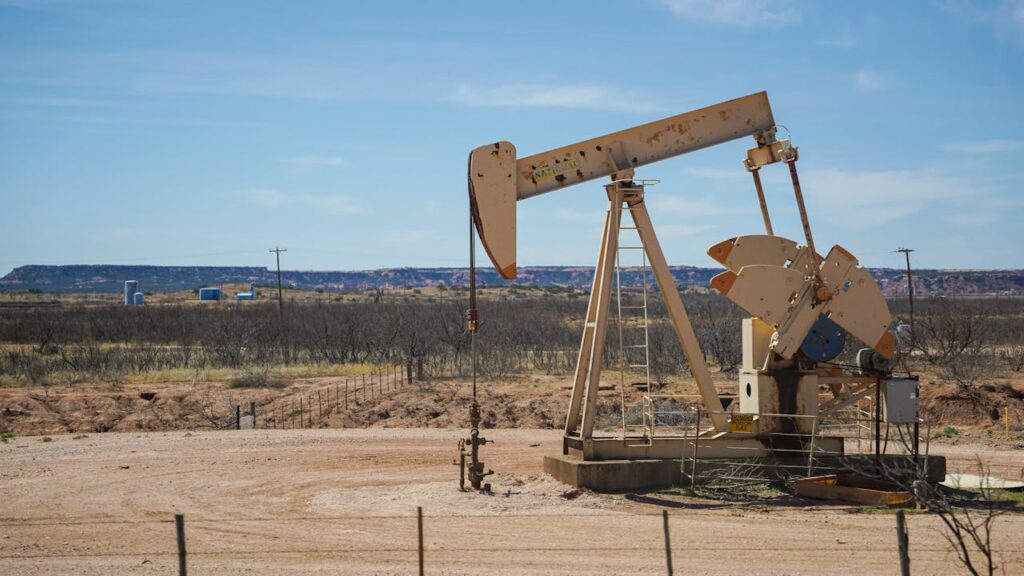


Nothing is easy, it seems, in Oil and Gas. Oil and Gas operations are daunting. Drill a hole, proverbially blind, downward(ish), and hope to find hidden oil or natural gas. While drilling blind, crossing eons of formations of unknown composition, thickness, and pressures, you are incurring costs in the hope that precious minerals are even present when you reach your target depth. If one discovers oil and gas, they cannot know the quality, quantity, or recoverable reserve of the discovery.

Accounting can be a difficult world. Accounting has Principles. As funny as that sounds, it is true. Oil and Gas causes all kinds of issues for these Accounting Principles.
Let’s break down a couple of the accounting principles and how they affect your processes in oil & gas accounting.
One of the principles is the Revenue Recognition Principle[1]. When does a company recognize revenue? The answer is when the company has earned it, not necessarily when money changes hand. In a retail store, you pay for the purchases at the same time you take possession of your purchase. Revenue Recognition is easy, it occurs at the time of sale, which is also the same time money changes hands.
Now, let’s say you own an oil and gas tool company. When an oil company purchases a tool from you, you send them an invoice that is due in 30 days. When do you recognize this revenue? The answer is at the time of the invoice. At the time of invoice, you have transferred the tool to that company. Your company has completed its obligation in the deal. Even though you don’t have the payment yet, you recognize the revenue.
[1] https://www.investopedia.com/terms/r/revenuerecognition.asp
The Matching Principle[1] states that we must also book expenses associated with earning that revenue when we book revenue. This matching principle ensures that the income and costs stay in the same period (month, quarter, year, etc…) to prevent the financials from “bouncing” from month to month. Without the matching principle, the sale of the oil field tool above might result in booking the expense months before the tool sale (the construction or fabrication time for the tool). As a result, a month or two before the sale might display as a loss on the profit and loss statement (the expense), then the month of the sale would show a large income (due to revenue being booked without the expense previously booked). The Matching Principal binds income and costs to avoid this. However, this principle wreaks all kinds of havoc on oil and gas companies!
[1] https://corporatefinanceinstitute.com/resources/accounting/matching-principle/
Exploration Costs - accurately record costs associated with exploration activities.
Large Capital Investments - Must track and record large capital investments, their purchase and sale information.

Uncertainties follow the Oil and Gas industry from operations to accounting. The complexity of Oil and Gas operations led to only a recent settlement on how Oil and Gas companies should conduct their accounting.
First, let us be clear, there are four stages of expenses (4 defined periods of discovery, exploration, and production of oil and gas). They are Acquisition Expenses, the expense incurred to have the right to explore for oil and gas, often called a lease. Exploration Expenses, the expense of drilling the well and getting the zone ready for developing the well. We are two stages in, and we are often still uncertain if there is any oil or gas present. Third, Development Expenses, the expenses associated with preparing to get the oil and gas to come to the surface, so that it may be sold. Fourth, Production Expenses, the expenses directly associated with getting the oil or gas out of the ground and sold at market.
All these expenses are a part of the cost of the oil and gas that is sold. Therefore, they are all part of the Matching Principle and must be deferred (or capitalized (added to the balance sheet so they do not show as an expense yet)) until revenue is recognized.
If you drill a well and do not find oil or gas, what do you do with those costs? Should they be expensed? If so, that will be a complete loss for that well and that period. A complete loss could make it difficult to attract lending or investors, especially with the old rule of thumb that one in four wells “hit” (or make enough to payout).
What if you drill 4 wells in an area? Three wells are dry, and one well is active. Would it make sense to capitalize (move the balance sheet and depreciate/amortize over time) all the expenses of all of the wells, and match the expense to the revenue, when it comes in? Didn’t the other three wells have a part in the development of the play area? Setting boundaries, geological discoveries, even if a dry hole, for the producing well? Shouldn’t their costs be associated with the overall income of the package area?
What if you do find oil or gas? Then what do you do with the expenses? Charge them all off at once (Expense them), or over the life of the well (capitalization to depreciation/amortization)? If you expense them, there will not be discovery costs to offset future revenues. If you capitalize them, you do now know how long to charge off the expense, as there is no way to know the complete recoverable reserves. Either way, the well is likely to show some income/profit, if oil or gas were found.
So, a well hits oil (or gas)! Woohoo!! Now what? Technically, we have an asset, in the form of inventory! But how much? How fast will it produce? How long will the inventory last? How much of the inventory can we bring to market (produce and sell)? What is the size of the reserve? The answer is, we simply do not know. Accounting does not do well with “I don’t know”.

The accounting debate on how to handle Oil and Gas Income, Expenses, and booking Reserves has been going on for a long time! In truth, the solutions have only recently been (mostly) settled. The issue is so complex, that following is an accounting of the timeline and changes.
Successful Efforts
From its inception, oil and gas coalesced into the Successful Efforts Method. The Successful Efforts Method says: that any costs that can be directly associated with successful efforts should be capitalized. All other expenses should be expensed immediately. While this method gives a clear understanding of the performance of each well, it doesn’t accurately portray the activity of a company developing an area. It also accelerates expense recognition, by expensing all costs that are not associated with a successful well. The IRS tends to frown upon accelerated expensing, as it lowers taxable income. Businesses do not typically like accelerated expensing either, as it lowers profit, therefore lending and investing opportunities. Businesses ONLY like accelerated expensing for tax purposes.
1950’s Full Cost Method
Due to these limitations, the Full Cost Method came into being in the 1950’s. The Full Cost Method states all costs should be capitalized and charged off when revenue is received. The Full Cost Method became popular and was widely used by many mid and smaller-sized Oil and Gas Companies.
Accounting needs guidelines. The guidelines create comparable reports between divergent businesses. If it weren’t for accounting systems and guidelines, it would be impossible to compare one business to another. One business may choose to expense all purchases, regardless of size, at the time of purchase. Another company may choose to expense nothing, move all expenses to the Balance Sheet, and then amortize the expense over time or with recognized revenue.
In 1969, the AICPA (American Institute of Certified Public Accountants) looked at oil and gas accounting and decided that the Successful Efforts Method best reflected accounting principles. However, the Accounting Principles Board chose not to act or select an accounting method. This leads to the necessity of the FASB (Financial Accounting Standards Board, formerly known as the Accounting Principles Board) to re-examine this issue in the 1970s.
In 1975, as a reaction to OPEC’s embargo, Congress required the SEC to adopt oil and gas accounting rules or to adopt the FASB standards. In 1977, in coordination with the FASB, the SEC required all companies to follow the Successful Efforts Method by passing Statement of Financial Accounting Standards (SFAS) No 19.
This ruling lasted three years, and in 1978 the SEC passed Accounting Series Release (ASR) 253, which ruled both the Successful Efforts Method and the Full Cost Method were deficient, and neither could be used. Their reason, up to this time, reserves were not booked on financial statements. Meaning, that the entire value of an oil and gas company is their inventory or reserves, and these were reported nowhere. Only the income and expense from produced oil or gas was reported.
The passed the Reserve Recognition Accounting method, which required oil companies to declare revenue when a reserve was discovered as opposed to when it was produced and sold. Please note, this did not settle the oil and gas debate and several rule changes occurred between 1975 and 1981.

In 1981, the SEC realized there was no good solution to the oil and gas accounting debate, the relaxed the RRA and allowed companies to continue to use the Successful Efforts or Full Cost Methods, but added the requirement that reserves must be disclosed on addendums to the financials (for publicly traded companies).

Rule changes have occurred and are finally somewhat settled, as of 2010. The rule updates from 1996 to 2010 made changes to how reserves must be calculated and disclosed, as well as applying some of the reporting requirements to privately held companies, as well as publicly traded companies.
First, accounting in general is not easy. It is a heavily misunderstood discipline. Many people work on a part or a function of accounting (Accounts Payable, Accounts Receivable, Bank Account Reconciliation) and assume they know accounting. These jobs represent an infinitesimal portion of an accountant’s job and body of knowledge.
Oil and Gas accounting is even more of a beast, as outlined in this document. We have been producing Oil and Gas since the 1850s, after The Pennsylvania Rock Oil Company was formed (1855)[1], quickly followed by Standard Oil. For 169 years, we have grappled with the issue of how to account for the Oil and Gas company’s activities.
The answer, this isn’t easy! If you own a producing oil and gas company, it is well within your best interest to hire an accounting firm familiar with the principles and disciplines of Oil and Gas accounting!
[1] https://guides.loc.gov/oil-and-gas-industry/history#:~:text=In%201855%2C%20looking%20for%20a,the%20Pennsylvania%20Rock%20Oil%20Company
“Accounting.” Corporate Finance Institute, 26 Dec. 2023, corporatefinanceinstitute.com/resources/accounting/accounting/.
EKT Interactive. “History of Oil – a Timeline of the Modern Oil Industry.” EKT Interactive, 19 Oct. 2023, ektinteractive.com/history-of-oil/#:~:text=What%20was%20the%20first%20oil,of%20the%20oil%20industry%20forever.
“Matching Principle.” Corporate Finance Institute, 23 Nov. 2023, corporatefinanceinstitute.com/resources/accounting/matching-principle/.
Oil & Gas Accounting. Accounting tools, 2018.
“Oil & Gas Primer.” Corporate Finance Institute, 7 Dec. 2023, corporatefinanceinstitute.com/resources/career/oil-gas-primer/.
“Research Guides: Oil and Gas Industry: A Research Guide: History of the Industry.” History of the Industry – Oil and Gas Industry: A Research Guide – Research Guides at Library of Congress, guides.loc.gov/oil-and-gas-industry/history#:~:text=In%201855%2C%20looking%20for%20a,the%20Pennsylvania%20Rock%20Oil%20Company. Accessed 6 Jan. 2024.
Tuovila, Alicia. “Revenue Recognition: What It Means in Accounting and the 5 Steps.” Investopedia, Investopedia, www.investopedia.com/terms/r/revenuerecognition.asp. Accessed 5 Jan. 2024.
Wright, Charlotte J. Fundamentals of Oil & Gas Accounting. PennWell, 2017.

